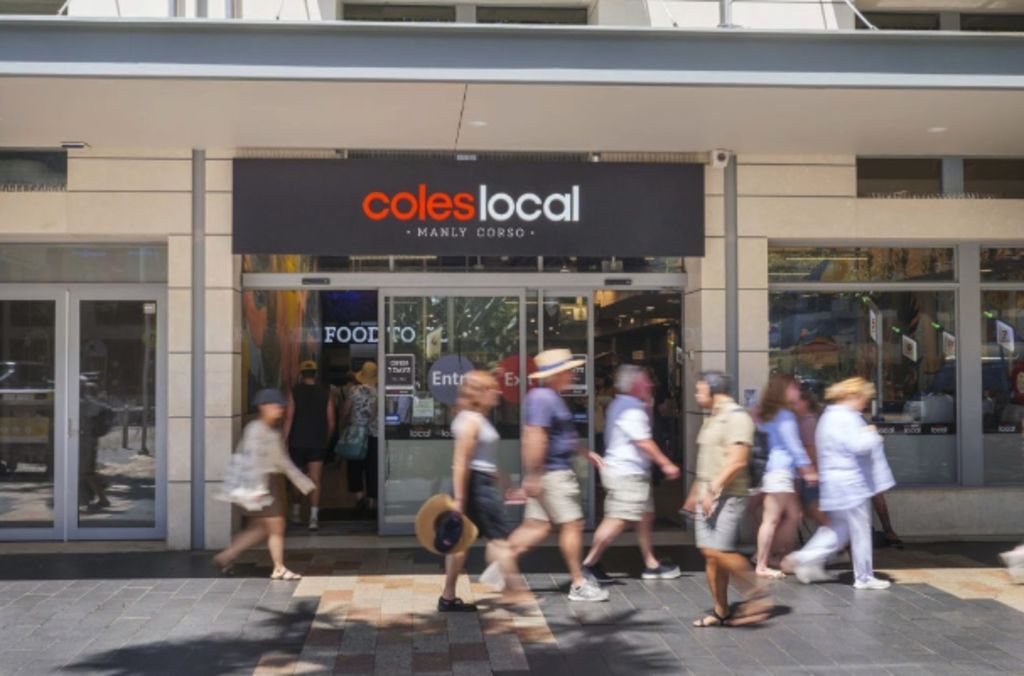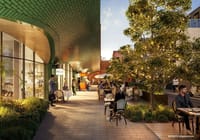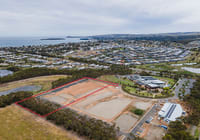
How supermarkets have captured the convenience store market
From Balmain and Bowen Hills to Balwyn North and Newtown, Australia’s top four supermarkets are dishing up sushi, sandwiches and ready-made salads from an ever-growing number of small-scale stores in a bid to win customers’ increased appetite for convenience.
With the value of the country’s ready-made meal market expected to swell from $2.844 billion to $4.932 billion over the next decade, it’s little wonder Coles Local and Woolies Metro stores are multiplying like gym memberships in January.
Many are located in densely populated communities, within striking distance of transport hubs or precincts with substantial foot traffic.
When Aldi opened a small-format store in Sydney’s Newtown in 2023, the then-director of Aldi Corner Stores, Huw Longman, said the range and layout were designed to better meet the needs of customers in a high-density urban area.
“Shopping habits continue to evolve, and we are seeing a large audience of people who prefer shopping more frequently with a hyper-focus on convenience,” he said.
In the introductory phase of small-scale supermarkets, some stores offered barista-made coffee, a resident chef offering product samples, advice and recipes to customers, a vertical herb farm, and, at Aldi’s first Corner Store in North Sydney, a Pizzabot – a vending machine designed to produce wood-fired pizza in about two minutes.
Perhaps demonstrating that even a supermarket can’t be all things to all people, these initiatives were mostly short-lived, but customer appetite for prepared meals and fresh snacks remains firmly on the rise.
Historically, shoppers had to settle for frozen meals and mass-produced baked goods, but in recent years, precooked and pre-packaged meals and bakery items have moved into the spotlight, often displayed in open-fronted refrigerators or shelving at the front of the store.
A 2019 Coles study of almost 40,000 customers found that preparing ingredients was the biggest pain point when cooking dinner, with 55 per cent of respondents only deciding what they would eat that day.
Dual-income households are time-poor, and people have become accustomed to doing top-up shops rather than weekly big shops, leading them to seek a store that is close and offers a quick and easy visit.
It’s a recipe for success supermarkets couldn’t ignore.
There are now about 30 Coles Locals, 105 Woolies Metros, 309 IGA Local Grocer and X-press stores and seven Aldi Corner Stores across the country.
With a retail floor space ranging from 250 square metres to 1,500 square metres, these small format stores typically stock a reduced range compared to the full-line supermarkets, but have a generous fresh food offering.
Alongside sandwiches, sushi and salads, they might offer soups, fresh juice, baked goods and pre-cut fruit and vegetables. You might find single-serve mochi and macarons, as well as scoop-and-weigh treats for our increasingly pampered pets. For humans, the range of pre-prepared meals varies between stores, often catering to the local demographic with different cuisines and local suppliers.
It’s expected that the convenience-led smaller supermarkets will generate more profit than traditional shops, with fresh food usually carrying higher margins than long-life staples, but there is generally no differentiation between the formats in annual reports to confirm figures.
In its 2023 annual report, Woolworths Group reported a 21.6 per cent increase in sales across its Metro Food Stores and noted that fresh meals “continued to resonate with customers”.
Mixed-use development is also feeding into the convenience trend, with small-scale supermarkets increasingly found on the ground floors of new apartment buildings. Many councils are adjusting zoning to allow or encourage mixed use; sometimes it’s mandated for certain precincts to have ground‑floor activation or retail as part of residential development.
As governments push for greater density in our urban centres, it appears that major supermarket chains have the leverage afforded by scale across logistics, procurement, brand, and loyalty to make smaller formats in mixed-use projects feasible.
This means the dedicated retail property development arms of both Coles and Woolworths are busy sourcing new sites, keen to compete with petrol stations, cafes, fast-food outlets, and traditional convenience stores that stock an ever-changing range of ready-to-eat food items and self-serve drinks.
The smaller-format stores allow reach in places where a full supermarket would be hard, if not impossible, to site, due to land availability, real estate costs and parking requirements.
And it certainly doesn’t hurt your brand to have shopfronts in more suburbs.










